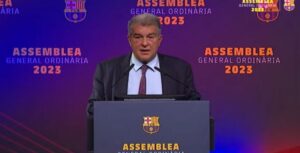NCAA Inches Closer to Landmark $2.8 Billion Settlement Over Athlete Compensation
The NCAA is taking significant steps toward finalizing its monumental $2.8 billion antitrust settlement, aimed at reshaping the landscape of college athletics compensation.
On Wednesday, May 7, attorneys submitted a revised proposal to address one of the most contentious issues that had delayed progress: how roster limits would impact current and incoming athletes, particularly those with already-promised spots for the 2025–26 academic year.
The latest update offers a critical safeguard: any Division I athlete—including those at programs like South Carolina—who was in danger of losing a current or promised roster spot due to new scholarship or roster limitations will now be exempt from those restrictions. This includes incoming freshmen, transfers, and current rostered athletes.
According to the filing, both the NCAA and the plaintiffs now agree that:
“Any athlete who would have lost their roster spot (or a promised roster spot) for the 2025-2026 academic year due to the immediate implementation of roster limits will be exempt from any roster limits at any Division I institution, for the duration of their college athletics careers.”
This crucial change came in response to a decision by U.S. District Judge Claudia Wilken, who ruled on April 23 that the initial proposal wasn’t “fair.” She recommended implementing a “grandfathering” system that would preserve roster positions for athletes already promised a spot. While power conference executives had accepted the grandfathering idea during private meetings, they initially wanted it to remain optional for schools, a suggestion that drew legal criticism.
On Wednesday evening, Judge Wilken allowed objectors to the revised proposal to file formal responses by May 13, with the NCAA and plaintiffs having until May 16 to reply. One of the most prominent voices among those objectors is Laura Reathaford, an attorney who told USA TODAY Sports that she plans to submit a separate brief. Reathaford was among three objectors Judge Wilken had previously ordered be included in negotiations, alongside representatives of the NCAA, power conferences, and the plaintiffs.
The future of the proposed settlement still hangs in the balance. Judge Wilken could:
- Approve the revised deal,
- Request further changes,
- Or reject it entirely—potentially sending the case to trial.
A rejection could trigger a high-stakes legal showdown. If the case proceeds to court and the NCAA loses, it could be liable for up to $20 billion in damages—a crushing blow to an already embattled organization under scrutiny for its handling of student-athlete compensation.
Alternatively, individual athletic programs may look to state legislation to push forward their own direct pay-to-play initiatives should the federal agreement fall apart.
For now, athletes across Division I, including the Gamecocks at South Carolina, can breathe a temporary sigh of relief, knowing their eligibility and roster status appear safe—at least for now—as the legal system continues to navigate one of the most transformative moments in college sports history.



